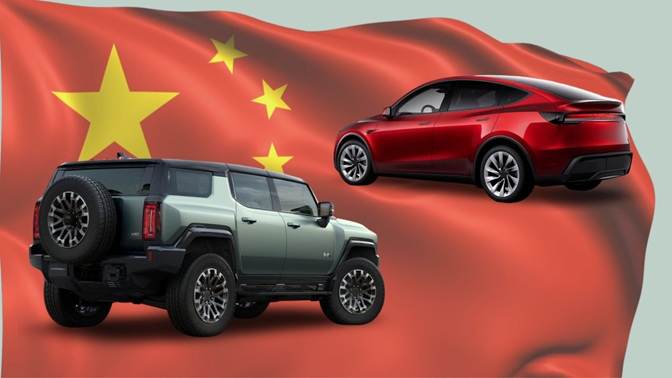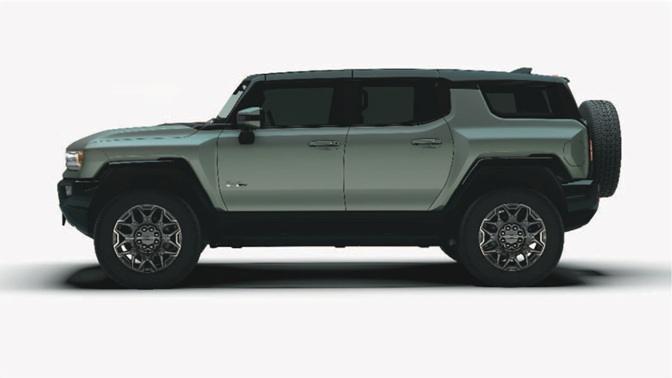If Tesla mission was to ignite the electric vehicle (EV) revolution and then pass the baton, it seems that moment has arrived. Once the undisputed leader in EVs, Tesla is now stepping back from the front lines just as the race heats up—and rivals from both East and West are more than ready to take the lead.

As Tesla shifts focus toward bold new frontiers like robotaxis and humanoid robots, its core business—selling EVs to everyday drivers—is losing momentum. In China, the world’s largest EV market, Tesla has been dethroned. General Motors (yes, GM!) is now selling more EVs there, thanks to its savvy joint ventures and a well-rounded lineup of electric offerings.
Recent data from the China Passenger Car Association paints a clear picture: Tesla’s market share in China’s New Energy Vehicle (NEV) segment dropped to just 3.2% in April 2025. That’s a big fall from 4.6% a year ago and a sharp decline from 7.5% just a month prior in March. BYD remains the dominant force in China with nearly 30% of the NEV market, followed by automakers like Geely (13.1%), Changan, and SAIC-GM-Wuling. Tesla, despite its early lead and iconic brand, has been pushed all the way down to eighth place.
It’s important to note that China’s NEV category includes not just pure electric vehicles, but also plug-in hybrids and hydrogen-powered cars. Tesla only builds pure EVs, whereas brands like BYD and Geely offer a mix. Still, the overall decline in Tesla’s numbers is a wake-up call.
Tesla’s decline isn’t limited to China. Sales across the U.S. and Europe have also dipped. Company executives blame the drop on production slowdowns as they ramp up the refreshed Model Y. But even with attractive financing deals in the U.S., Tesla is facing slower demand.
Meanwhile, competitors are flooding the market with newer, more appealing electric models—not just facelifts or tech updates, but genuinely fresh designs. This includes GM, which has used its China joint ventures to full advantage.
GM, long associated with gas-powered trucks and SUVs in the U.S., is staging a quiet electric comeback—especially in China. Its SAIC-GM-Wuling joint venture sold more than 100,000 EVs last year and has now outpaced Tesla in both April and year-to-date NEV sales.
GM’s market share in China’s NEV space reached 6.3% from January through April, compared to Tesla’s 4.9%. The surge is being driven by a diverse range of models, including the popular Wuling Hong Guang MiniEV, Cadillac Lyriq, and the Electra E5 and Velite 6 under Buick’s sub-brand specifically created for the Chinese market. GM is also adopting cheaper lithium-iron-phosphate (LFP) batteries to make EVs more affordable and accessible.
Tesla’s Global Strategy Shifts
While Tesla’s competitors focus on expanding EV offerings, Tesla is betting big on its upcoming Cybercab and Semi truck. The Cybercab, a two-door autonomous EV revealed at the flashy “We, Robot” event in Hollywood, is expected to enter trial production in October 2025. Tesla plans to launch it officially by 2026, with a price tag starting around $30,000.
After a temporary halt due to trade tensions, Tesla has resumed importing parts from China for both the Cybercab and the Semi. A brief tariff truce between the U.S. and China dropped duties on EV parts from 145% to 30%, easing the burden for automakers with global supply chains—Tesla included. Still, as Tesla turns its attention to robotics and futuristic mobility, the question looms: is it giving up its leadership in the EV race too soon?
While Tesla’s attention drifts and GM gains ground, BMW has quietly become one of the most strategic players in the EV game. Unlike other automakers that fumbled their transitions, BMW has stayed consistent—and it’s paying off.

During its latest Annual General Meeting, BMW reaffirmed its goal to have EVs account for 50% of its global sales by 2030. It’s already launched strong models like the i4, iX, i5, and i7—all based on flexible platforms shared with their gas-powered counterparts. This allowed BMW to scale production without massive restructuring.
BMW’s next phase involves the Neue Klasse—a fresh EV platform launching later this year with a sedan and SUV. Rumors point to upcoming models like the i1, i2, iX3, and iX5, expanding BMW’s electric presence across segments. CEO Oliver Zipse emphasized BMW’s steady direction: “While others are adjusting their plans, we are on the right track.” He also praised European policymakers for finally aligning industrial and environmental goals with the new “Green Industrial Deal.”
Tesla sparked the global EV boom—but now it risks losing relevance in the very industry it created. While it focuses on long-term bets like autonomous taxis, rivals like GM and BMW are doubling down on selling practical, well-designed EVs today.
General Motors, once seen as a laggard, is now a global EV contender—especially in China. BMW, often overlooked in EV discussions, is proving to be the most methodical and consistent of the legacy brands.
It’s clear that the EV race is no longer about one dominant player. The field is now crowded with contenders who’ve learned from Tesla—and in many ways, are now outpacing it. Can Tesla stay in the race by shifting to robotaxis and futuristic tech? Or will GM and BMW continue to dominate with real-world solutions that drivers want today?
Source- evearly.news
Related Post
